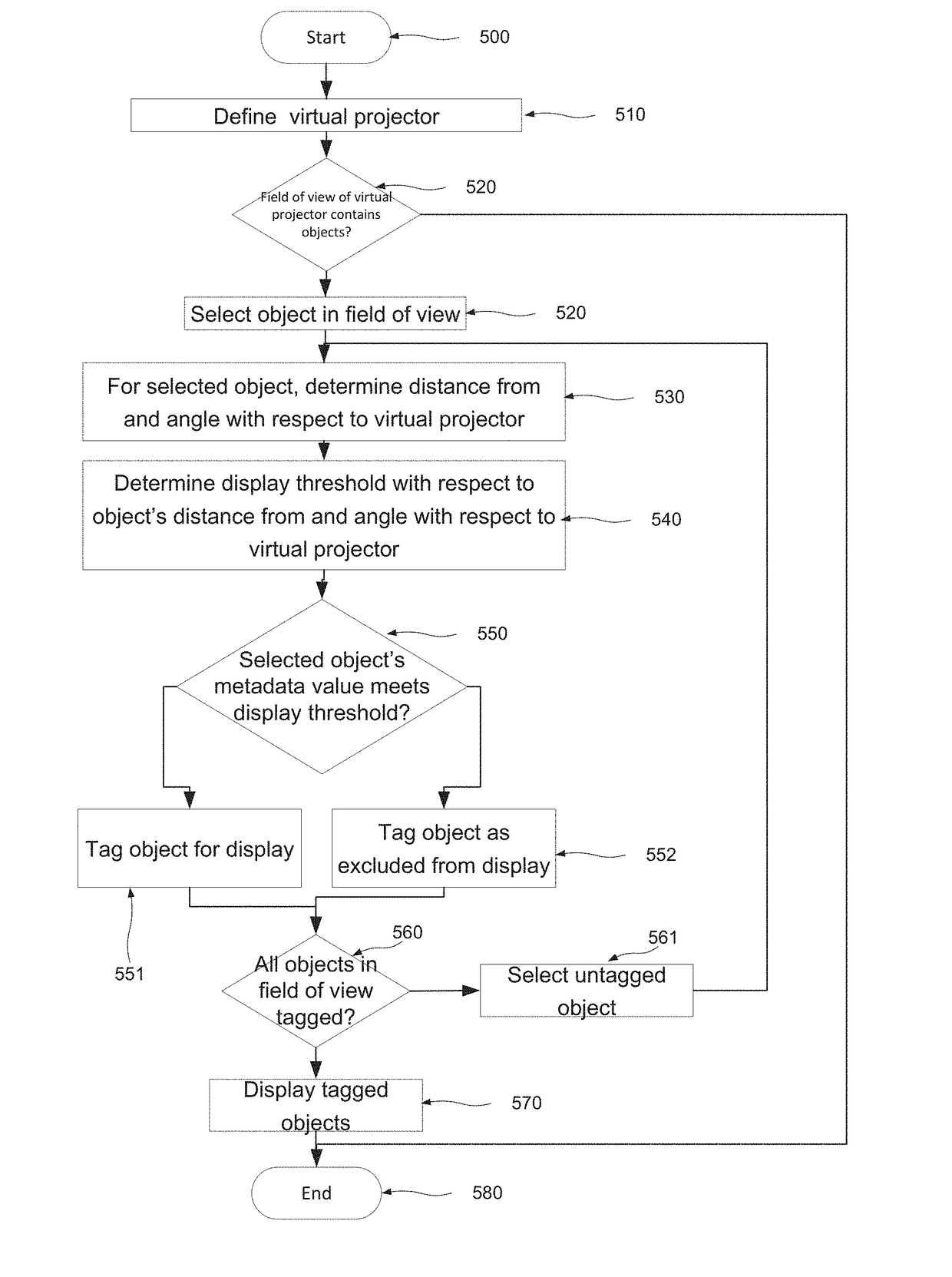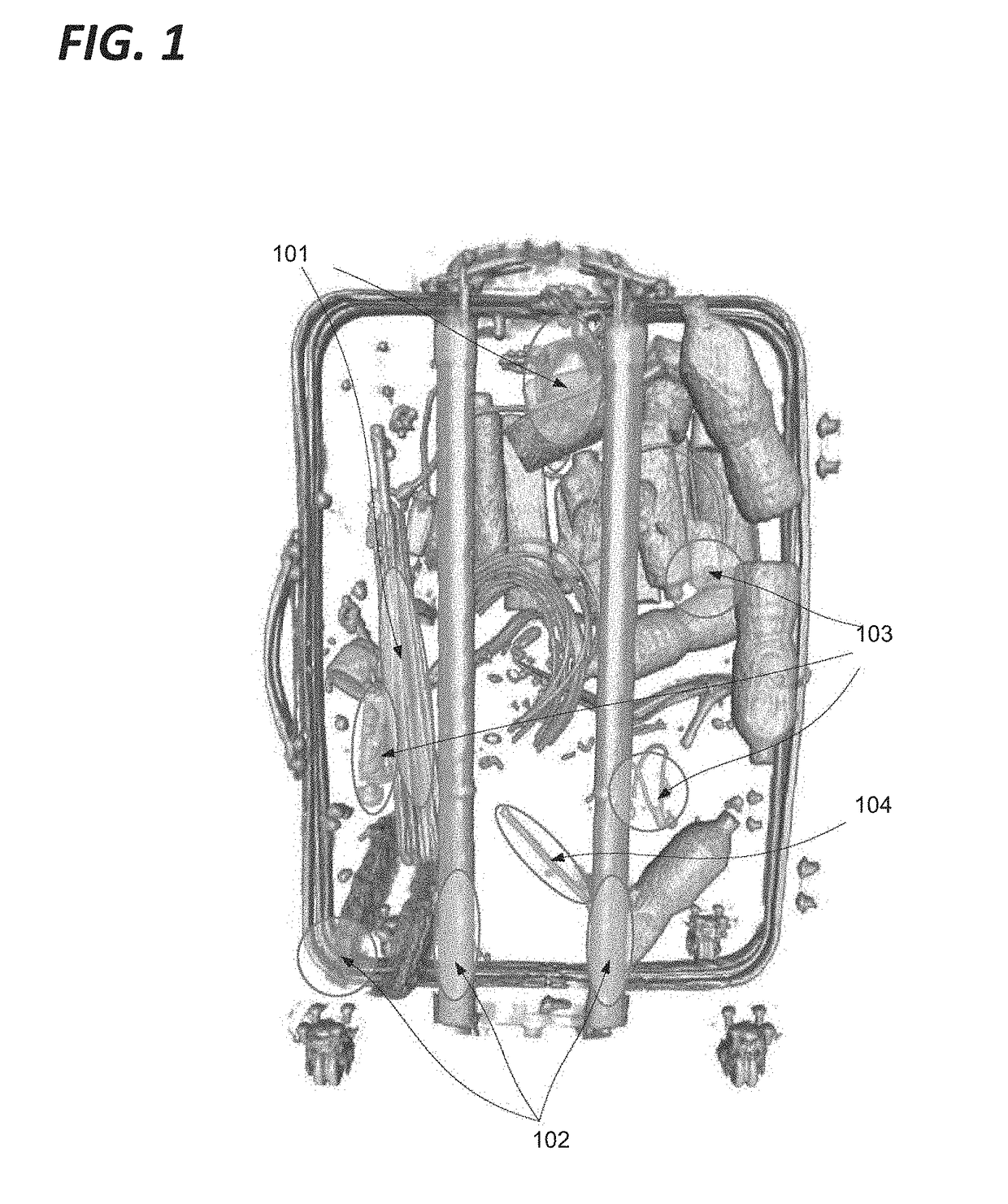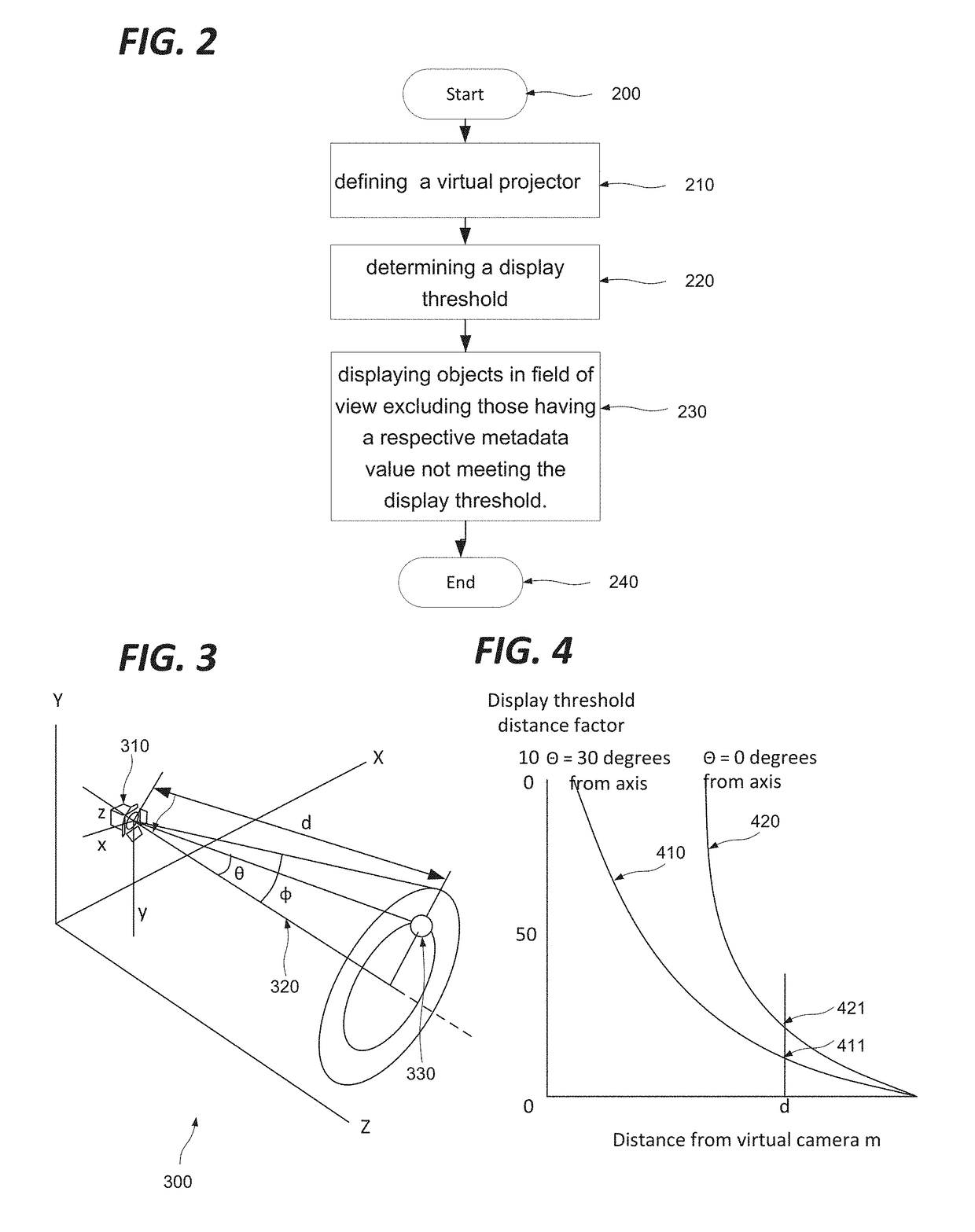Selective display in a computer generated environment
a computer generated environment and display technology, applied in the field of assisted exploration of computer generated virtual environments, can solve the problems of difficult detection of threats, inability to display original material colours, and objects located in corners, edges or inside the luggage frame, etc., to reduce the demands on system capacity, the effect of reducing the adaptation effort and improving the understanding speed
- Summary
- Abstract
- Description
- Claims
- Application Information
AI Technical Summary
Benefits of technology
Problems solved by technology
Method used
Image
Examples
Embodiment Construction
[0055]FIG. 2 shows a method according to an embodiment. More particularly, FIG. 2 shows steps of a method of displaying objects having a predefined spatial relationship in a three dimensional (3D) computer generated environment such as that described above with regard to FIG. 2.
[0056]The three dimensional environment may be defined in any suitable terms, such as for example voxels, polygons (for example in polygon mesh structures), intersecting surfaces (for example NURBS surfaces or subdivision surfaces,) or equation-based representations. By way of example, certain embodiments below will be described in terms of voxel based environments; however the skilled person will appreciate that the described embodiments may be adapted to any of these other environments.
[0057]In such an environment, the objects are each associated with a respective metadata value, which can be used to define the respective visibility of said objects in representations thereof. This value may directly define ...
PUM
 Login to view more
Login to view more Abstract
Description
Claims
Application Information
 Login to view more
Login to view more - R&D Engineer
- R&D Manager
- IP Professional
- Industry Leading Data Capabilities
- Powerful AI technology
- Patent DNA Extraction
Browse by: Latest US Patents, China's latest patents, Technical Efficacy Thesaurus, Application Domain, Technology Topic.
© 2024 PatSnap. All rights reserved.Legal|Privacy policy|Modern Slavery Act Transparency Statement|Sitemap



